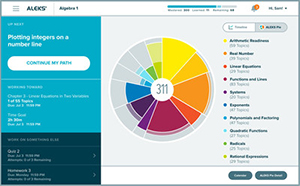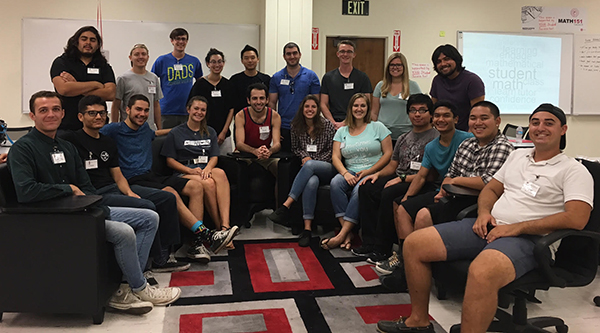
Calculus at SDSU
Calculus is the foundation for science and engineering, and it opens a world of opportunity. Calculus at SDSU will help you aquire powerful new tools to understand the world.
Note: Detailed information about the current format of placement (ALEKS) testing can be found at https://math.sdsu.edu/aleks
The Courses in the Calculus Sequence
The calculus curriculum for STEM majors at SDSU consists of the following courses:
- MATH 140: College Algebra (Formerly numbered MATH 105)
- MATH 141: Precalculus
- MATH 124: Calculus for Life Sciences
- MATH 150: Calculus 1
- MATH 151: Calculus 2
- MATH 252: Calculus 3

What is a Lecture?
Each course has a lecture, which meets three hours per week and has 100-200 students. The instructor introduces the material, conveys the key concepts, presents applications, and solves example problems. Instructors will often have you work problems in class. They use electronic polling of the class to gauge student understanding and assign think-pair-share questions — try it yourself, team up with a classmate, and share your ideas with each other about how to solve it.

We offer 4-5 meeting times per semester of the core courses: College Algebra, Precalculus, Calculus 1, and Calculus 2. All sections of each course share:
- Common syllabus
- Common evening exams
- Common Textbook and homework assignments.
These common elements ensure that standards are the same for all students and that all students are equally prepared for a subsequent course.
There are 3-4 meeting times of Calculus 3 each semester. Instructors write syllabi and exams independently.
There is one meeting time each semester for Calculus for Life Sciences.
Be prepared for lecture!
Read the book to familiarize yourself with the material before class so you are ready to learn. You should expect to work problems in class and to share your work with a neighbor.
What is a Breakout Session?
Each lecture group is divided into smaller breakout sections with roughly 30 students in each.

Calculus 1 and 2 breakouts are led by a graduate teaching assistant (TA) and meet twice a week. One day is primarily for problem solving, and the other is organized around a challenging problem that requires deeper conceptual understanding and discussion with peers.
Precalculus breakouts are led by an undergraduate instructional student assistant (ISA) and meet one hour per week. Some days involve an experiment in which the mathematics of the course is applied to a scientific problem. Other days are used to elaborate on key concepts.
Calculus for Life Sciences has a three hour computer lab led by a graduate teaching assistant.
Calculus 3 has one breakout, led by a TA, that meets once per week and focuses on problem solving.
Math is not a spectator sport!
Be prepared to work problems in class and explain your reasoning to other students.
Placement: Where do I begin?

We use ALEKS Placement, Preparation and Learning (PPL) for placement into:
- Math 141: Precalculus
- Math 124: Calculus for Life Sciences
- Math 150: Calculus 1 (for physical sciences and engineering majors)
The ALEKS PPL placement tool consists of five online assessments. The format has changed effective for the Fall 2023 "season."
- You can take the test up to five times. The assessment (and associated learning modules) are designed to help you place into the right math course. Starting in the course that best fits your preparation will give you the best learning experience.
- Can I cheat?!? Unless you are planning on sending ChatGPT to class (which would be an academic integrity violation), it is not a good idea to have ChatGPT take the placement test for you. Correct placement is for your benefit, don't cheat yourself!
Mathematics and Statistics Learning Center: A Community of Scholars
The Mathematics and Statistics Learning Center (MSLC) is on the third floor of the SDSU library and has workstations set up for each course. Teaching assistants and instructional student assistants all spend four hours per week tutoring in the MSLC. It provides a welcoming environment with drop-in tutoring and scheduled visits.
Don’t be a stranger!
Get to know your TA, tutors, and fellow students at the MSLC! Visit early in the semester. Make a practice of getting help early when you are confused. Learn to work with other students, helping each other is the best way to learn!
